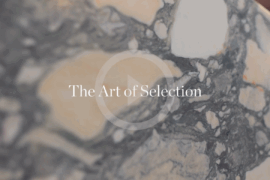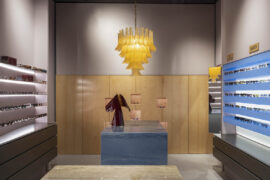The sun-shaped Sunrise Kempinski Hotel looks set to be a new architectural landmark in Beijing when it opens its doors this month writes Martine Beale.

November 5th, 2014
Located an hour outside of Beijing, the Sunrise Kempinski Hotel, Beijing is accompanied by the Yanqi Hotel and 12 Boutique Hotels that together form a 14-square-kilometre destination at the heart of the Yanqi Lake.
Yanqi Lake, which means ‘Swans dwell on the lake’ in Chinese, is a picturesque lake located at the foot of the Yanshan Mountains that spans 65.78 hectares. It is surrounded by a variety of trees that welcome an abundance of rare and migrating birds.
Rising up 21 floors (97 metres) in this idyllic setting, the Sunrise Kempinski Hotel boasts a round form akin to a rising sun that is said to symbolise China’s fast-developing economy.
The entrance of the hotel is shaped like the mouth of a fish, symbolising prosperity, and from a side-angle view, it resembles a scallop, which represents fortune in Chinese culture.
The Sunrise Kempinski Hotel, Beijing sits on the lake’s shore and has 306 guestrooms and suites. The Yanqi Hotel has 111 guestrooms and suites, while the 12 Boutique Hotels, on Yanqi Island, have 178 guestrooms and suites.
Facilities include 14 restaurants and bars, 14,069 square metres of meeting space, landscaped gardens, a private marina, an electronic boat, the Yanqi Pagoda, a spa, recreational and fitness facilities, and a kid’s club.
Construction of the Sunrise Kempinski Hotel, Beijing took 24 months and involved more than 9,300 construction workers. It was designed by Chief Designer Zhang Hai Ao and his team from Shanghai Huadu Architect Design Company.
Zhang worked with a team of 60 designers from across the globe, including the UK, Italy, Spain, the US, Holland and the Philippines, who spent 60 days developing the building design.
“We had an international team because we needed a critical view from people outside of China to give their opinion on modern contemporary Chinese architectural design and to enable us to broaden our ideas on how we can use our design to showcase Chinese culture to the world,” Zhang says.
The building is constructed with reinforced concrete and an all-glass exterior in order to give the best blend between the built and the natural environment. And it can withstand up to a level 8 earthquake.
Clad in 10,000 glass panels, the top of the building reflects the sky’s ever-changing colours, the middle portion of the facade mirrors the surrounding mountain range, and the base of the hotel reflects the water’s surface. At night, the exterior panels are illuminated by hydroelectric-powered LED lights.
“We not only have to consider the ‘connection’ between the main building and the environment, it is a hotel complex that also involves a private island, so, a vivid visual needs to be created for the guests – in this case, when a guest looks at the hotel from Yanqi Island, it will give them a beautiful picture of sunrise and sunset,” Zhang explains.
The hotel’s interiors were designed by US-based design outfit DiLeonardo, who were inspired by the idea of framing the extraordinary views of Yanqi Lake and experimented with the juxtaposition of solids and voids while incorporating reoccurring geometric forms to create elements of intrigue.
The hotel’s contemporary public spaces are luxurious and feature art and shimmering light sculptures. The guest rooms are designed for relaxation and toned in natural hues that complement the lake and create a peaceful ambience via soft blues, wallpapered panels and golden honey wood flooring.
Set to open in November 2014, the spherical-shaped Sunrise Kempinski Hotel, Beijing is being eye-balled by the design and architecture world, as well as holiday seekers looking for destinations with a difference. Along Yanqi Lake, it can now be said that the sun rises in the east in more ways than one.
INDESIGN is on instagram
Follow @indesignlive
A searchable and comprehensive guide for specifying leading products and their suppliers
Keep up to date with the latest and greatest from our industry BFF's!

Merging two hotel identities in one landmark development, Hotel Indigo and Holiday Inn Little Collins capture the spirit of Melbourne through Buchan’s narrative-driven design – elevated by GROHE’s signature craftsmanship.

For a closer look behind the creative process, watch this video interview with Sebastian Nash, where he explores the making of King Living’s textile range – from fibre choices to design intent.

CDK Stone’s Natasha Stengos takes us through its Alexandria Selection Centre, where stone choice becomes a sensory experience – from curated spaces, crafted details and a colour-organised selection floor.

London-based design duo Raw Edges have joined forces with Established & Sons and Tongue & Groove to introduce Wall to Wall – a hand-stained, “living collection” that transforms parquet flooring into a canvas of colour, pattern, and possibility.
The internet never sleeps! Here's the stuff you might have missed

A calm, gallery-like boutique by Brahman Perera for One Point Seven Four brings contemporary luxury and craft to Strand Arcade.

MillerKnoll releases the 2025 Better World Report showcasing how design can drive meaningful change through measurable progress across social, environmental and governance initiatives